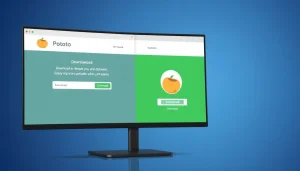Comprehensive Guide to Understand AI Checkers and Their Importance
1. Introduction to AI Checkers
In today’s digital landscape, the proliferation of artificial intelligence (AI) has transformed the way we generate and consume content. With the significant advancements in AI language models such as ChatGPT, GPT-4, and others, the need for reliable tools to distinguish between human-written and AI-generated text has become crucial. This is where ai checkers come into play. These tools serve to ensure content authenticity, uphold academic integrity, and maintain the quality of communications across various sectors.
1.1 What is an AI Checker?
An AI checker is a specialized tool designed to analyze text and determine whether it has been created or significantly influenced by artificial intelligence. These tools utilize sophisticated algorithms and machine learning techniques to evaluate the structural and linguistic patterns present in the text, helping to ascertain its origin. By doing so, AI checkers provide insights that are invaluable for educators, content creators, and organizations aiming to maintain the integrity of their work.
1.2 Importance of Using an AI Checker
As the use of AI in content creation becomes more pervasive, so does the potential for misuse. For instance, students may submit essays generated by AI instead of crafting their own work, or businesses may publish misleading, AI-produced content that lacks a human touch. Implementing AI checkers can mitigate these issues by:
- Ensuring academic honesty: Educational institutions can maintain their standards by detecting AI-generated submissions in assessments.
- Upholding content quality: Publishers and businesses can ensure their output retains a human voice, which aids in building trust with their audience.
- Preventing plagiarism: Many AI detectors also incorporate plagiarism detection, adding an additional layer of scrutiny to written work.
1.3 How AI Checkers Work
AI checkers leverage multiple methodologies to perform their evaluations. These typically include:
- Statistical Analysis: By analyzing the frequency and arrangement of words and phrases, these tools can identify patterns characteristic of AI-generated text.
- Machine Learning Models: Most AI checkers are trained on massive datasets that include both human-written and AI-generated content, allowing them to learn the nuances and subtle differences between the two.
- Multi-Layered Evaluation: A combination of different approaches is often used to create a multifaceted analysis that enhances accuracy and reliability.
2. Types of AI Checkers
2.1 Free vs. Paid AI Checkers
When it comes to AI checkers, users typically have the option of choosing between free and paid versions. Each type offers its own set of benefits and limitations:
- Free AI Checkers: These tools generally offer basic functionalities that allow users to check text for AI characteristics. While they may be suitable for casual users or one-time checks, they often lack advanced features and may have limitations on the text length or number of checks available.
- Paid AI Checkers: These services typically provide comprehensive analysis, supporting longer texts and offering additional features like detailed reporting, plagiarism checking, and more robust support. Many institutions and businesses find that the investment is worthwhile for the enhanced accuracy and functionality provided.
2.2 Specialized AI Content Detectors
Different AI checkers focus on various niches to cater to specific user needs:
- Academic Detectors: These tools are geared towards educational institutions, ensuring student submissions adhere to academic integrity.
- Plagiarism Checkers: While overlapping with AI detection, these tools are specialized to identify content that has been copied or unoriginal.
- Content Quality Assessors: Helping businesses maintain their brand voice, these tools analyze the tone, structure, and engagement level of their content.
2.3 Comparing Popular AI Checkers
The market is teeming with AI checking tools, each boasting unique features. Some of the most recognized names include:
- ZeroGPT: Known for its advanced multi-stage methodology, it accurately detects AI-generated content from a variety of platforms, including ChatGPT and GPT-4.
- QuillBot: Offering a free AI Detector tool, it provides reliable results for identifying content generated across multiple AI models.
- GPTZero: Often highlighted in media, it stands out for its advanced capabilities in handling lengthy texts up to 50,000 characters.
- Grammarly’s AI Detector: Part of the popular writing assistant suite, known for its accuracy and user-friendly interface.
3. Best Practices for Using an AI Checker
3.1 Setting Up Your AI Checker
To maximize the effectiveness of an AI checker, it must be set up correctly. Consider the following steps:
- Choose the Right Tool: Identify an AI checker that meets your specific requirements based on the type of content you need to analyze.
- Create an Account: For paid tools, account creation often comes with guidance to tailor the experience to your needs.
- Understand the Interface: Familiarize yourself with the features and layout of the tool to navigate it efficiently.
3.2 Analyzing Your First Text
Once set up, the next step is the actual analysis. Here’s how to approach it:
- Select Your Text: Choose a piece of text that you want to evaluate.
- Input the Text: Paste or upload the text into the AI checker.
- Run the Analysis: Initiate the evaluation process and await the results, which may take a few moments depending on the tool’s capabilities.
3.3 Interpreting Results Effectively
Upon receiving results, understanding them is vital for effective decision-making:
- Review the Scores: Many AI checkers provide a score indicating the likelihood of AI-generated content.
- Analyze Feedback: Look for specific areas indicated as potentially AI-generated, often highlighted within the text.
- Make Informed Decisions: Use the insights gained to revise and enhance the content, ensuring its originality and quality.
4. Challenges Faced by AI Checkers
4.1 Limitations of Current AI Detection
Despite their advancements, AI checkers face several challenges:
- False Positives: Some AI checkers may incorrectly label human-written content as AI-generated, leading to unnecessary concerns.
- Context Sensitivity: Complex sentence structures or artistic writing can confuse AI detection algorithms, yielding inaccurate results.
- Limited Training Data: The efficacy of an AI checker largely depends on the dataset it was trained on; models lacking diverse training are less reliable.
4.2 Common Misunderstandings
There are several myths surrounding AI checkers that can mislead users:
- AI Checkers Are Foolproof: Users often assume these tools will provide 100% accuracy, which is unrealistic given the complexity of language.
- All AI Generated Content is Bad: Just because content is AI-generated doesn’t mean it lacks value—many AI outputs are useful and well-structured.
- They Replace Human Judgment: AI checkers should supplement, not replace, human insight and critical judgment.
4.3 Solutions to Enhance Accuracy
To address the limitations of AI checkers, several approaches can be employed:
- Continuous Training: Regular updates to the AI checker’s algorithms can improve detection accuracy across varying content types.
- Incorporating User Feedback: Allowing users to report inaccuracies can help developers fine-tune their models.
- Diverse Datasets: Ensuring that AI checkers are trained on a wide range of text types can enhance their understanding of different writing styles.
5. Future of AI Checkers
5.1 Evolution of AI Detection Technologies
As AI technologies continue to evolve, so too will AI detection tools. Innovations in natural language processing and machine learning promise to enhance the sophistication of these checkers, allowing them to recognize even the most refined AI-generated text.
5.2 What’s Next for AI Checkers?
Looking ahead, we can anticipate several key developments in AI checker technology:
- User-Centered Features: Future AI checkers will focus on user experience, incorporating intuitive designs and personalized settings to suit individual needs.
- Integration with Other Tools: Many checkers are expected to integrate with writing software, enhancing workflow efficiency.
- Broader Applications: Beyond academia and content creation, AI checkers may find uses in journalism, creative writing, and legal texts.
5.3 The Impact on Content Creation and Academic Integrity
Ultimately, the advancement of AI checkers will have profound implications for content creation and academic integrity. As these tools gain sophistication, they will play a pivotal role in shaping ethical standards in writing, fostering a landscape where authenticity and originality can thrive. Content creators will be encouraged to enhance their skills and diversify their styles, while academic institutions can reinforce their commitment to integrity and transparency.














Post Comment